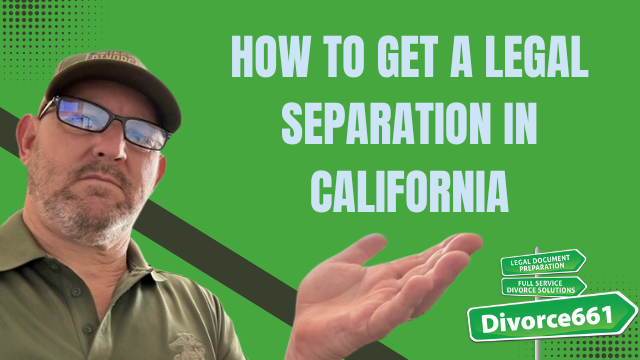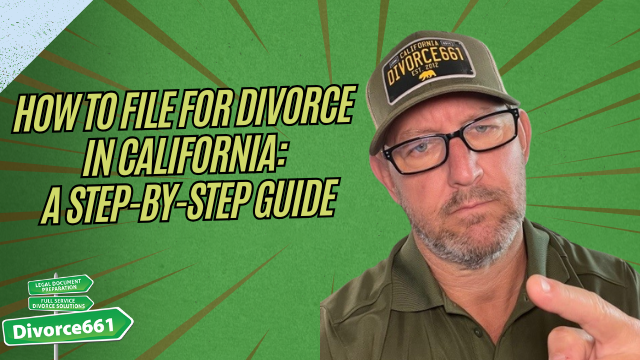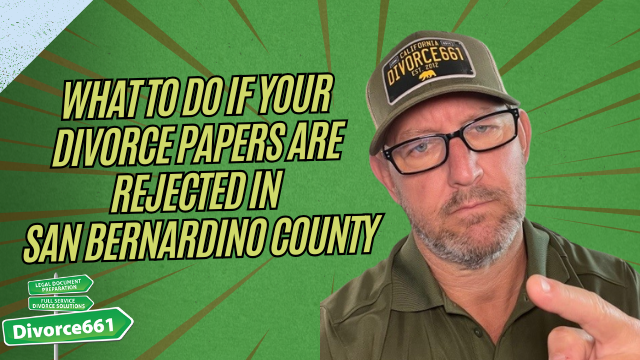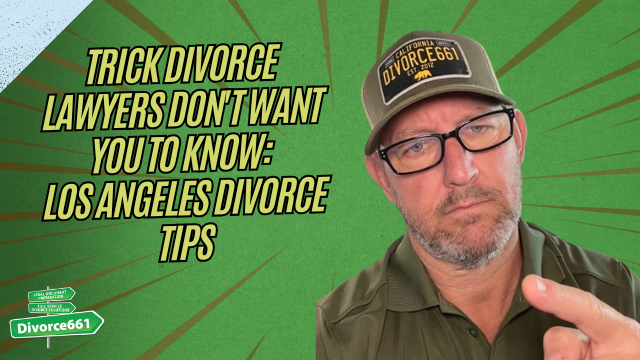How to Handle a High-Asset Divorce in California
I’m Tim Blankenship from Divorce661. If you’re facing a high-asset divorce in California—where real estate, businesses, stock options, and retirement accounts are on the line—this guide is for you. High-asset splits aren’t just about dividing things; they’re about protecting what you built, preserving your financial future, and finishing the process as cleanly as possible.
Why the stakes are so high
In California, most assets acquired during the marriage are treated as community property. That means what you and your spouse accumulated together could be divided—often evenly—if you don’t plan carefully. Imagine losing half of your retirement savings, a business interest, or rental properties because valuations were wrong or assets were overlooked. Understanding the stakes is the first step in protecting your interests.
Step 1 — Get accurate valuations
Accurate valuation is the cornerstone of a fair division. Undervaluing assets like businesses, real estate portfolios, and stock holdings can leave you with far less than your share. For high-asset matters, use professionals:
- Business valuation experts for income, goodwill, and ownership percentage issues
- Certified appraisers for real estate and unique assets
- Financial planners or retirement specialists for 401(k), pension, and IRA valuations
- Forensic accountants when asset tracing or complex ownership history is necessary
Getting the true worth up front reduces disputes and ensures any settlement reflects real value, not guesswork.
Step 2 — Find and disclose all assets
Hidden or forgotten assets derail otherwise fair agreements. Full financial disclosure is non-negotiable. That means listing bank accounts, investment accounts, business interests, deferred compensation, stock options, rental properties, trusts, and any other holdings. Proper disclosure does two things:
- Prevents surprises later that could reopen settlements
- Builds trust and helps keep negotiations out of court
Documentation is everything: tax returns, account statements, business financials, property deeds, and contracts. If discovery raises questions, a forensic accountant can help uncover transfers or omissions.
Step 3 — Understand tricky assets
Certain assets require special attention because they’re harder to value or divide:
- Businesses: Consider income streams, goodwill, minority/majority ownership, buy-sell agreements, and tax consequences when transferring ownership.
- Real estate: Multiple properties and rental portfolios need individual appraisals, and cash-flow considerations may affect who keeps which property.
- Retirement accounts & stock options: Some accounts require Qualified Domestic Relations Orders (QDROs) or specific paperwork to transfer benefits without tax penalties.
Work with specialists who understand the nuances so you don’t inadvertently create a tax or liquidity problem when dividing assets.
Real client example — a Los Angeles couple
We recently worked with a Los Angeles couple who owned several rental properties and had complex retirement portfolios. They wanted to avoid courtroom drama. Here’s how we helped them:
- Organized every asset and documentation
- Engaged valuation professionals where necessary
- Negotiated a fair split based on accurate values and tax-aware planning
- Documented the agreement and filed the paperwork correctly with the court
Result: A fully executed divorce without a single hearing. Transparency and preparation made the difference.
How to keep a high-asset divorce amicable
An amicable divorce is possible—even with complex finances—if both parties commit to transparency and reasonable solutions. Key practices that help:
- Open, full disclosure of financial information
- Relying on impartial valuation experts
- Negotiating practical, tax-aware settlements (swap assets rather than cash when appropriate)
- Documenting agreements clearly and filing them correctly
When couples follow these steps, they often avoid costly litigation, protect their assets better, and move forward faster.
How Divorce661 can help
At Divorce661 we focus on amicable, high-asset divorces. What we bring to the table:
- Experience with valuation professionals and forensic accountants
- Preparation and filing of all necessary court paperwork
- Flat-fee services so you avoid surprise attorney bills
- Guidance on tax and liquidity implications of proposed splits
If you’d like a free consultation, visit Divorce661.com or schedule a free phone consultation at https://divorce661.com/divorce661-consultation/.
Conclusion — Protect your financial future
High-asset divorces are complex, but they don’t have to be destructive. Accurate valuation, complete disclosure, and careful documentation are the foundations of a fair outcome. Take the time to involve the right experts, be transparent, and plan for tax and liquidity consequences. Your financial future is worth that diligence.
“Don’t let hidden assets slip through the cracks. Full financial disclosure is non-negotiable.”
If you’re facing a high-asset divorce in California and want help protecting what you’ve built, visit Divorce661.com for a free consultation. Let’s work together to finalize your divorce fairly and straightforwardly.








